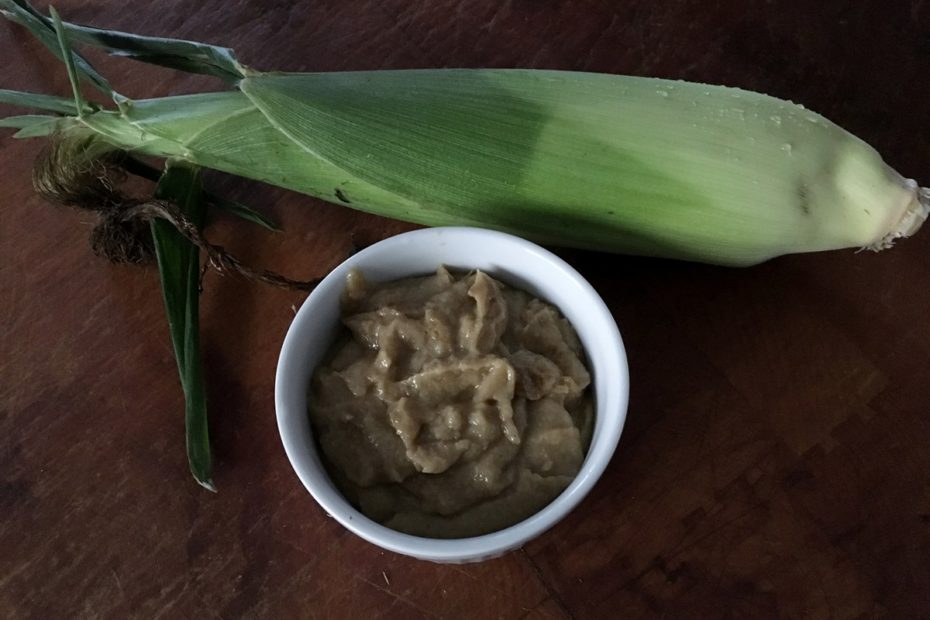It being peak corn season, when this recipe popped up on Food 52, I thought it was weird enough to either be great, or a disaster. It finally got cool enough to want to stand by the stove, so time to give it a shot.
Corn Ketchup
- 4 ears corn
- 1 large shallot, minced (about 6 tablespoons)
- 2 garlic cloves, minced
- 1 tablespoon peanut oil
- 1 tablespoon ginger, grated
- 1/4 teaspoon coriander
- 1/8 teaspoon allspice
- 3/4 cup coconut milk
- 1/4 cup water
- 2 tablespoons rice vinegar
- 1 tablespoon brown sugar
- 2 teaspoons lime juice
Using a grater, grate the corn into a large bowl, getting as much corn and juice as possible (about 2 1/4 cups). Save the leftover corn cobs for your next batch of corn chowder.
Heat the peanut oil in a tall-sided, medium sauce pan over medium-low heat and gently cook shallots and garlic with a pinch of salt, the coriander, and the allspice until just beginning to brown. Stir in ginger and cook for another minute. Add corn, coconut milk, and water and scrape any browned bits from the bottom of the pan. Cook another two minutes.
Pour mixture into a blender and let it cool briefly while you wipe out the pot. Blend until very smooth, strain through a fine mesh strainer, and return to pot. Discard solids.
Turn heat to medium-high and add vinegar and brown sugar to corn mixture. Cook, stirring often to keep the bottom from sticking and burning, until mixture is thick—like ketchup (mixture will thicken up when it cools). Turn off heat, stir in lime juice, and add salt and pepper to taste. Serve as you would with ketchup and enjoy!
My verdict:
Much like the lobster roll potato chips, blindfolded you wouldn’t guess that corn was the basis for the ketchup.
Which brought up the question, what is ketchup? According to Wikipedia “Ketchup is a sweet and tangy sauce typically made from tomatoes, sugar, and vinegar, with assorted seasonings and spices. The latter vary by recipe, but commonly include onions, allspice, coriander, cloves, cumin, garlic, mustard and sometimes celery, cinnamon or ginger.”
The other question we had, was what to do with it? After a couple of days in the fridge, it was much thicker than traditional ketchup and the flavors of the ginger and spices were slightly more pronounced. It wasn’t enough to make a difference in the burger I tried it on.
The good news is that unlike the tomato stuff from a bottle, I know what went into it, the bad news is that I think there’s a lot of better things to make with a few ears of corn. What do you think?

